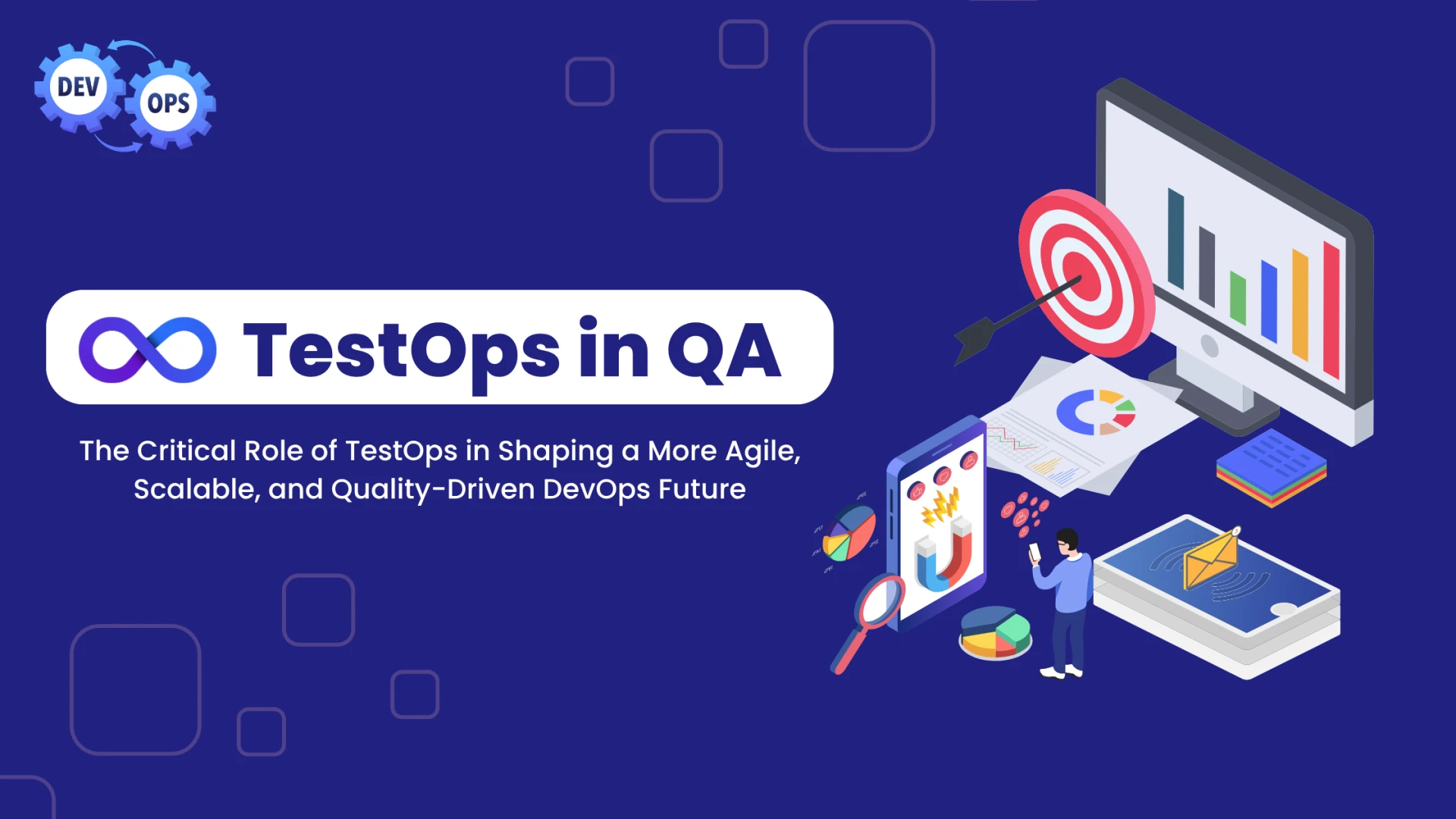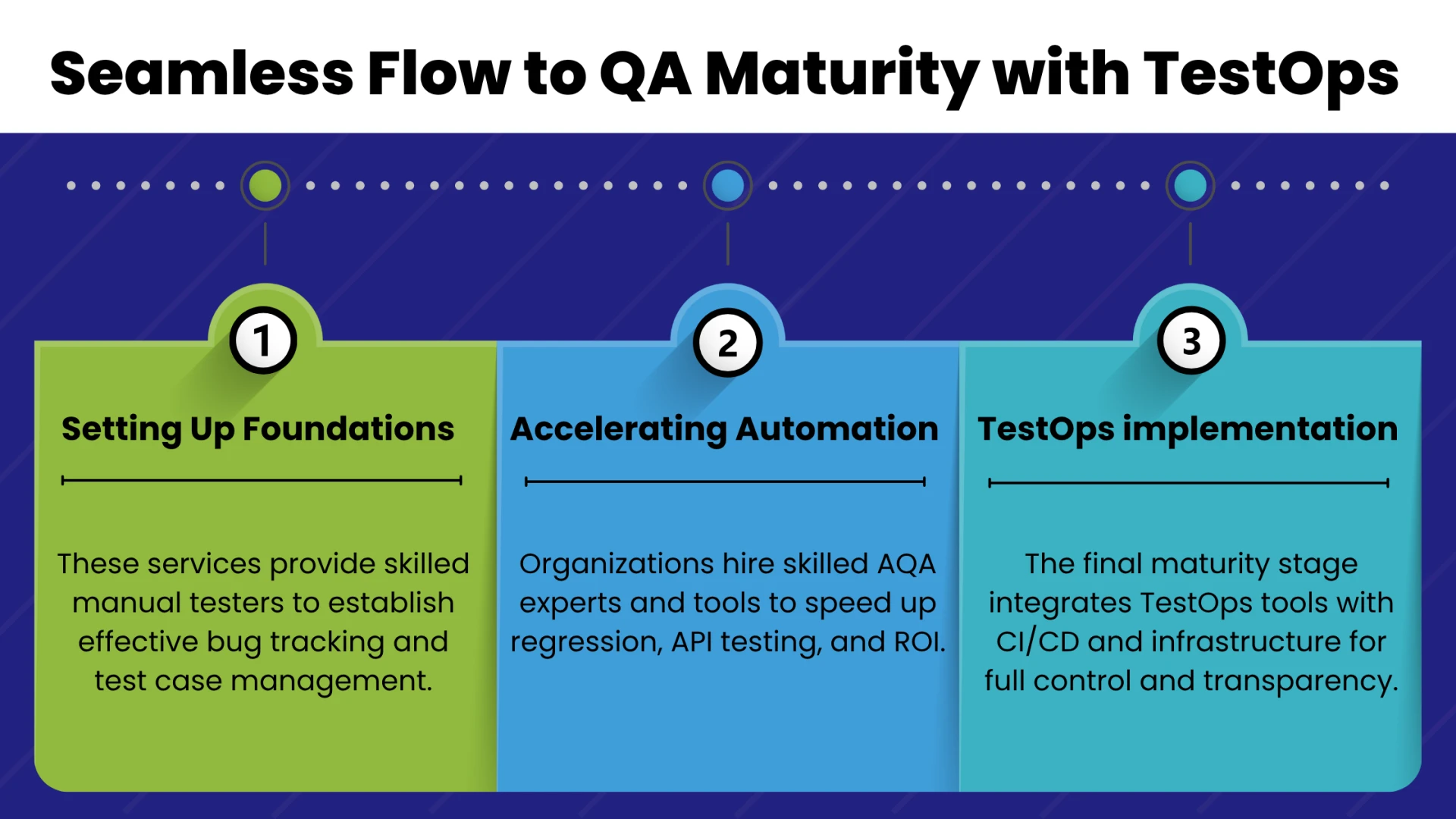
In the relentless race to innovate, speed is the price of admission. But shipping fast at the expense of quality is a debt that always comes due—in the form of unhappy customers, tarnished brand reputations, and expensive production errors. Development teams have struggled to strike a balance between stability and rapidity for years. A major bottleneck that causes conflict between developers and QA testers is the conventional approach, in which testing serves as the last gatekeeper before release.
So, how do elite teams resolve this conflict? They change the rules of the game entirely. This guide delves into the modern Agile & DevOps testing services paradigm, exploring how integrating quality into every step of the development lifecycle isn't just a best practice—it's the only way to win.
Shifting Left: The Core Principle of Agile & DevOps Testing
Testing has historically been a gate after the development process. The QA team received the feature post-development and construction. Critical deficiencies were sometimes identified too late due to the "waterfall" methodology, leading to chaotic reorganisation, postponed releases, and budgetary excesses.
This dynamic is fundamentally transformed by Agile and DevOps testing, which emphasises "shifting left." Testing is integrated into every phase of the software development lifecycle, from the initial concept to the final deployment, rather than being a subsequent consideration. This continuous testing methodology seeks to prevent faults rather than only discovering them.
Teams may find and address problems when they are simplest and least expensive to fix by integrating testers early on and automating checks across the CI/CD process. This smooth integration guarantees that quality is not only the QA testing department's duty but also a shared responsibility.
Introducing TestOps: The Engine for Modern QA Testing
As development cycles accelerated, a new challenge arose. The outcomes were frequently fragmented and challenging to understand since many teams worked on distinct microservices, utilising different frameworks and conducting tests across multiple CI systems. How can a release engineer or project manager make a sure "go/no-go" decision?
TestOps is the solution. TestOps, a subset of DevOps, offers the procedures, tools, and structure needed to coordinate and manage all testing operations along the pipeline. It makes the complexity more manageable by:
- Providing Transparency: It lets everyone—from coders and testers to project managers and business stakeholders—see how testing works and what the results are.
- Aggregating Results: TestOps platforms collect data from all types of tests, such as unit, integration, API, user interaction, performance, and display it on a single, easy-to-find screen.
- Enabling Control: TestOps makes testing predictable and manageable by making it easy for teams to run, repeat, and keep track of all the tests.
TestOps essentially turns fragmented test findings into actionable data for assured decision-making, which is what makes Agile & DevOps testing genuinely operational.
The Evolving Role of the Modern QA Team
It's a prevalent misperception that DevOps's inherent automation renders specialised QA specialists obsolete. The truth is very different. From manual execution to strategic quality orchestration, the function of QA testing has changed. A contemporary team combines a variety of specialised abilities:
Automation QA Engineers (AQAs) / SDETs
Automated testing relies heavily on these engineers, who are essential for executing a successful DevOps automation model. They use the same technological stack as the developers (e.g., Pytest for Python, Jest for JavaScript) to create reliable, manageable "native" tests rather than merely writing test scripts. They oversee the testing infrastructure, including Playwright setups and Selenium grids, and collaborate closely with developers. They frequently evaluate their unit tests to establish QA best practices at an early stage.
QA Managers and Engineers
The QA Manager oversees the larger release management procedure, whilst AQAs concentrate on code-level automation. They have strategic duties to perform:
- Decision-Making: Evaluating bug reports and test coverage to provide guidance on release readiness.
- Risk Analysis: Determining which product specifications are tested and estimating the likelihood of releasing a product with known problems.
- Exploratory Testing: Manually examining novel, intricate features to find unplanned errors that automated testing could overlook.
- Cross-Team Communication: Ensuring sufficient testing of cross-team APIs and large-scale features.
Navigating the Path to Maturity with Software Testing Services
It takes time to develop a mature TestOps practice. Before reaching a fully integrated TestOps team, it usually starts with a single human tester setting up simple bug-reporting procedures. From there, it progresses through phases of increasing automation and infrastructure management. However, not all businesses have the internal knowledge, time, or resources to handle this complicated transition on their own.
Professional software testing services are quite valuable in this situation. An organization's path to testing maturity can be accelerated by collaborating with a specialist supplier in the following ways:

1.Setting up Foundations
These services can offer qualified manual testers to teams just getting started, helping them set up reliable bug-tracking and test case management procedures.
2.Accelerating Automation
Many people face significant challenges as they transition to automation. That is why organizations want to hire experienced AQA personnel and utilize renowned automation tools to quickly cover regression suites and key API tests, resulting in immediate return on investment.
3.TestOps implementation
This last stage of maturity entails thorough integration with infrastructure management and CI/CD pipelines. A specialized partner may provide expert advice on choosing and deploying TestOps technologies (such as qTest or Allure TestOps), integrating them with platforms like Jenkins and Docker, and setting up procedures for complete control and transparency.
Concluding Thoughts
Ultimately, moving beyond the friction of traditional QA is a choice. The future is now a clear, purposeful discipline based on continuous quality and TestOps principles rather than a mystery. Effective Agile & DevOps testing, which turns the whole development lifecycle into a quality-driven engine, is the foundation of this new paradigm. This calls for a fresh approach to QA testing that emphasises data-driven decision-making, automation, and teamwork.
Nowadays, every leader is asked how soon they can make this change, rather than if they should. Specialised software testing service providers may offer the vital knowledge and impetus required to create a robust, high-velocity testing culture that genuinely delivers for companies prepared to expedite this shift and benefit from it.



